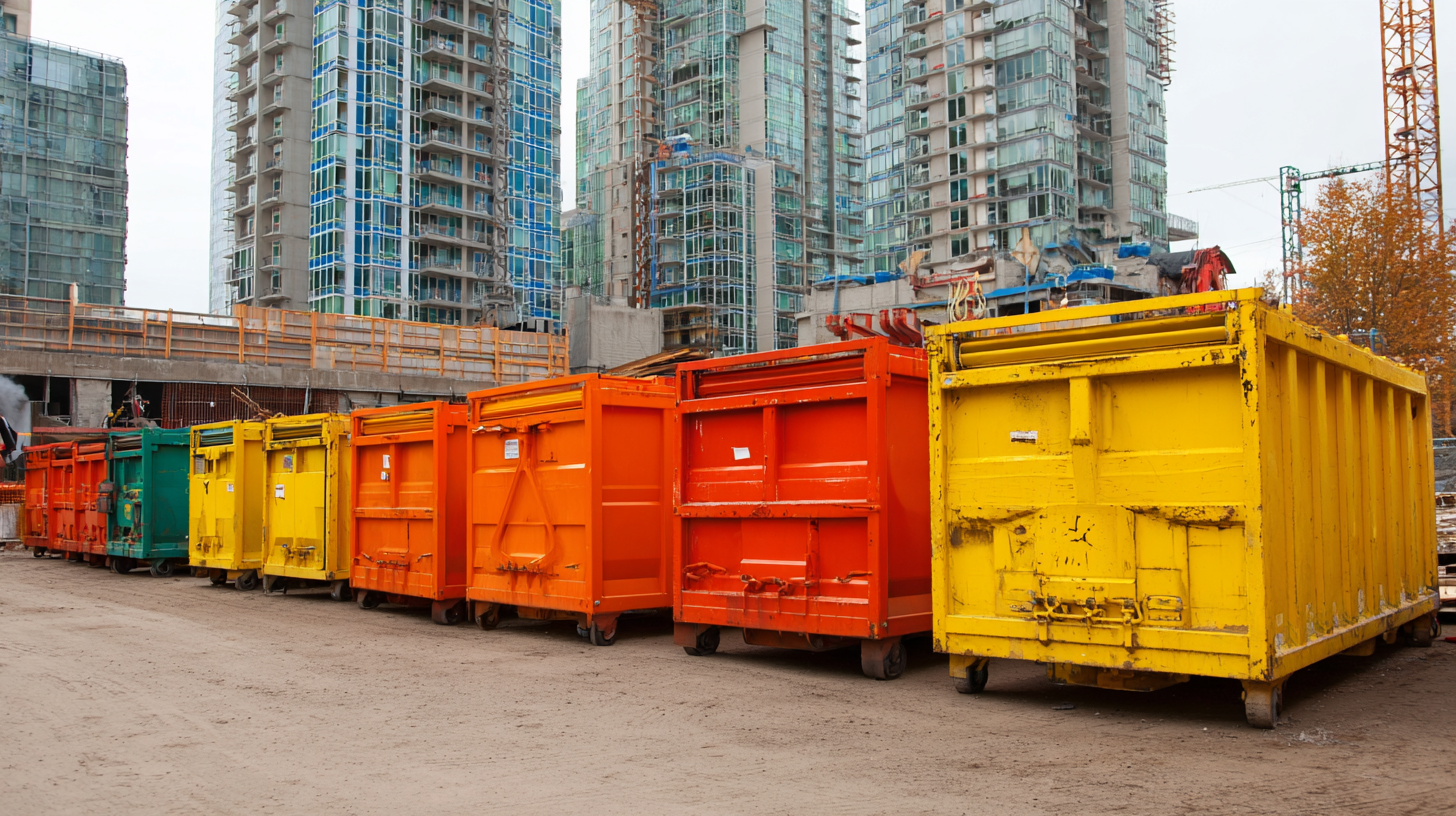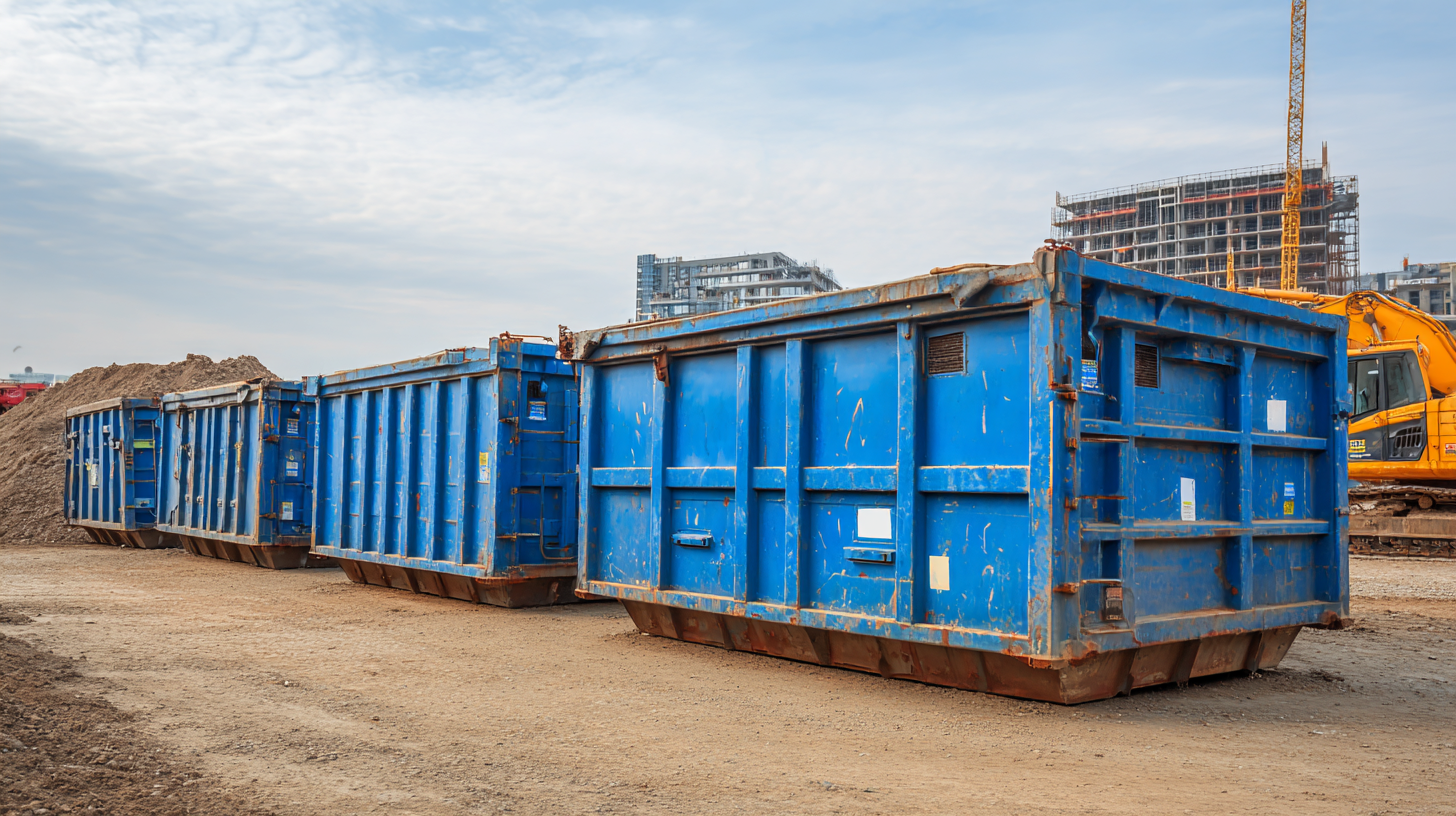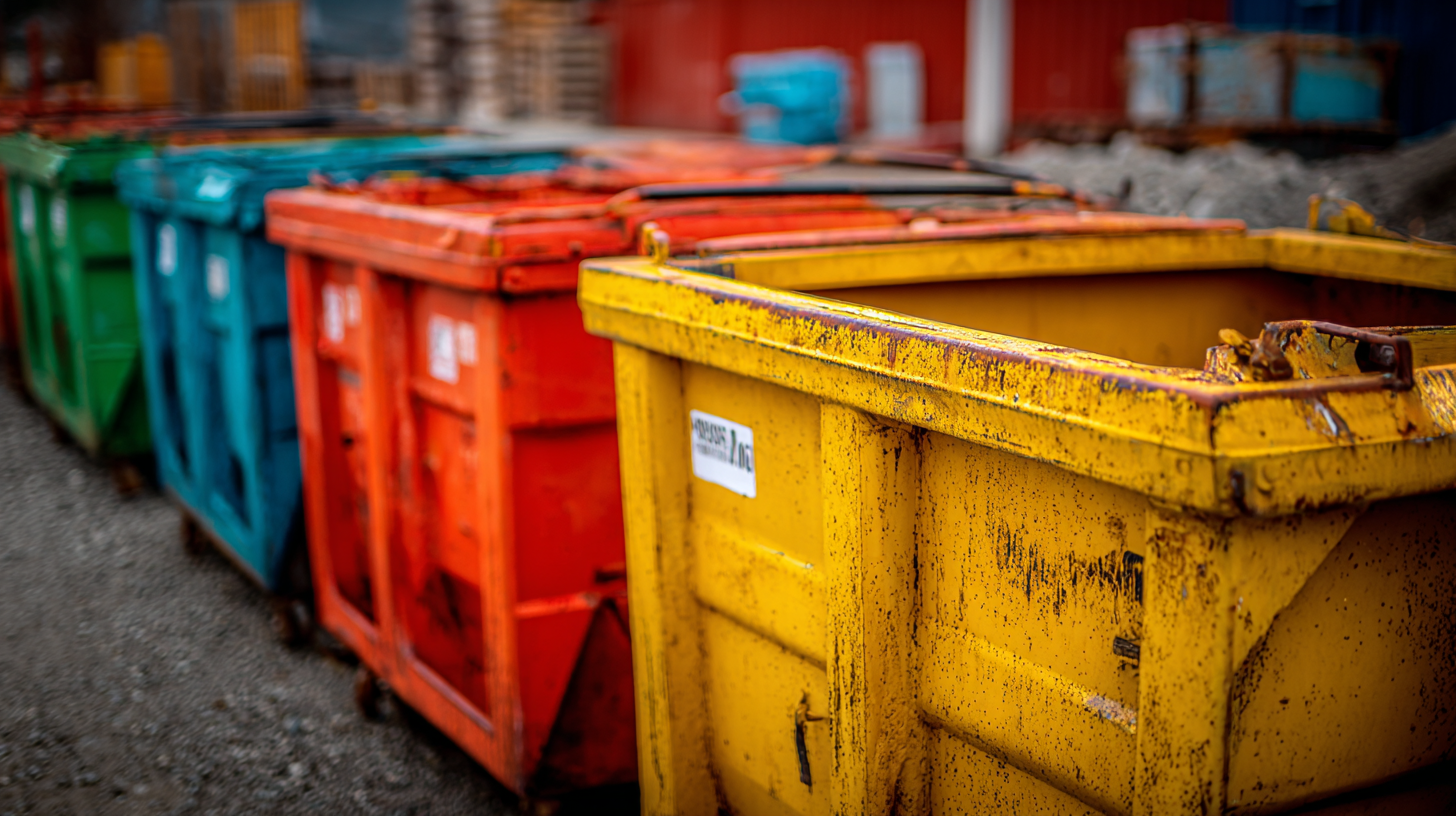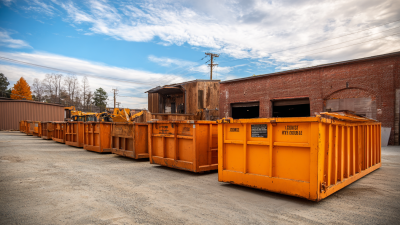Maximizing Efficiency: The Essential Guide to Choosing the Right Construction Disposal Containers
In the fast-paced world of construction, managing waste efficiently is paramount to maintaining project timelines and budgets. The choice of the right construction disposal containers can significantly impact both efficiency and environmental responsibility. According to a report by the Environmental Protection Agency (EPA), construction and demolition activities account for approximately 40% of the total solid waste generation in the United States. Moreover, a study conducted by the Waste Management Association highlighted that improper waste disposal can lead to increased costs of up to 30% on a project due to delays and penalties. By understanding the various options available for construction disposal containers and the specific needs of their projects, contractors can minimize waste, improve site safety, and ensure compliance with local regulations. This guide aims to empower construction professionals with the necessary insights and strategies to select the most effective disposal containers tailored to their operational needs.

Understanding Different Types of Construction Disposal Containers Available Today
When it comes to construction projects, selecting the appropriate disposal container is crucial for maintaining operational efficiency and adhering to environmental regulations. Today, various types of disposal containers are available, each designed to handle specific waste types. For example, traditional roll-off containers are ideal for large demolition sites, accommodating up to 40 yards of mixed debris. According to industry reports, utilizing such containers can reduce waste management costs by as much as 20%, making them a popular choice among contractors.
Another option is the dumpster bag, which can hold about 3 cubic yards of waste and is suitable for smaller renovation jobs. These compact bags are particularly advantageous for urban settings where space is limited. It's important to assess the type of waste generated—whether it's general construction debris, hazardous waste, or recyclable materials—before making a selection.
Tips: Always check local regulations regarding disposal of specific materials. Some areas mandate separate containers for hazardous waste to ensure safety and compliance. Furthermore, consider the frequency of pickup to avoid overflow, which can disrupt your project timeline and increase costs. Understanding these disposal options will enhance your overall project efficiency and help manage expenses effectively.
6 Key Factors to Consider When Choosing the Right Container for Your Project
When selecting construction disposal containers, it's crucial to consider several key factors that will ensure both efficiency and compliance with project needs. First, the size of the container should match the scale of your project. Assessing the volume of materials to be disposed of will help in determining whether a small, medium, or large container is appropriate. Ensuring that the container size is adequate will prevent unnecessary delays and additional costs associated with overfilled or multiple pickups.
Another important factor is the type of materials you will be disposing of. Different containers are designed for specific types of waste, such as hazardous materials, recyclables, or general construction debris. It's essential to choose a container that caters to the specific requirements of your project to comply with local regulations and to avoid potential fines or legal issues. Additionally, consider the location of the site and access for delivery and pickup; a container placed in a hard-to-reach area can lead to logistical challenges that disrupt workflow. Reviewing these factors will help you select the right construction disposal container, ultimately maximizing efficiency in your project.

Best Practices for Efficient Waste Management on Construction Sites
Effective waste management on construction sites is crucial for maximizing efficiency and minimizing environmental impact. One of the best practices is to select the right disposal container tailored to the specific needs of the project. For instance, using specialized containers for hazardous materials can help ensure compliance with safety regulations and prevent contamination. Additionally, implementing a waste sorting system on-site encourages workers to separate recyclable materials from general construction debris, thus improving recycling rates.
Regular training and communication among the construction team are vital to uphold these practices. Ensuring that all workers understand the significance of proper waste disposal and the locations of disposal containers can significantly enhance compliance. Moreover, scheduling regular pickups for full containers helps maintain a clean and organized work environment while reducing delays due to excess debris. By focusing on these best practices, construction managers can foster a culture of efficiency and responsibility, ultimately leading to a more sustainable construction process.
Top 5 Tips for Reducing Costs with the Right Disposal Container Selection
Choosing the right construction disposal containers can significantly impact your project's overall efficiency and budget. One of the primary considerations is to assess the waste types generated on your site. Distinguishing between recyclable materials, hazardous waste, and general construction debris can help you select a container that best suits your needs and minimizes costs. For instance, using specialized containers for recyclable materials can potentially lead to lower disposal fees and reduce landfill contributions.

Another vital tip is to opt for the right size of the container. Selecting a container that is too large may incur unnecessary rental costs, while a too-small container can lead to extra trips for disposal. To avoid confusion, accurately estimate the amount of waste your project will produce and consult with your disposal service for recommendations.
Finally, timing your container usage can also aid in cutting costs. Scheduling specific pickups when your container is full rather than relying on a constant rental can reduce overall fees. Moreover, consolidating waste disposal to align with project phases allows for more efficient container use. By implementing these strategies, you can ensure a more financially sensible disposal process that supports your construction goals.
How to Effectively Plan for Container Placement and Accessibility on Site
When planning a construction project, ensuring efficient container placement is paramount for enhancing workflow and productivity. According to a report by the Waste Management Association, poor container placement can lead to a 30% increase in time spent on trash disposal, affecting overall project timelines. To mitigate these delays, it's essential to assess the site layout comprehensively before deciding where to position your disposal containers. Areas with high foot traffic or proximity to heavy machinery must be prioritized to keep operations running smoothly and safely.
Accessibility is another critical factor in container planning. A study from the National Association of Home Builders indicates that secure and easy access to disposal containers can reduce the risk of accidents by 25%. Ensuring that containers are placed where workers can access them without navigating around equipment or obstacles not only enhances safety but also encourages proper waste disposal practices. Contractors should consider traffic flow and ensure containers are visible and reachable, enhancing operational efficiency and promoting a culture of cleanliness on-site.

